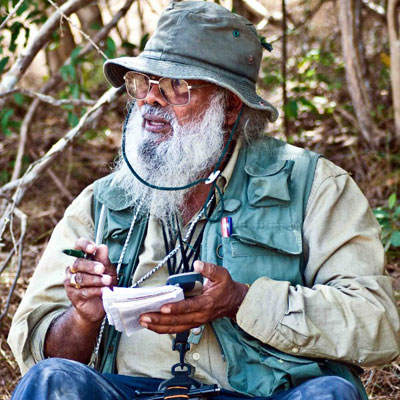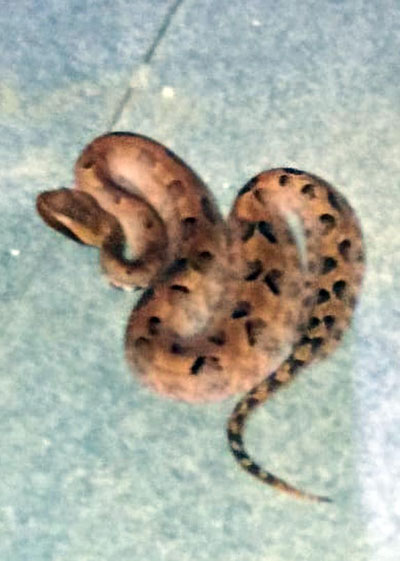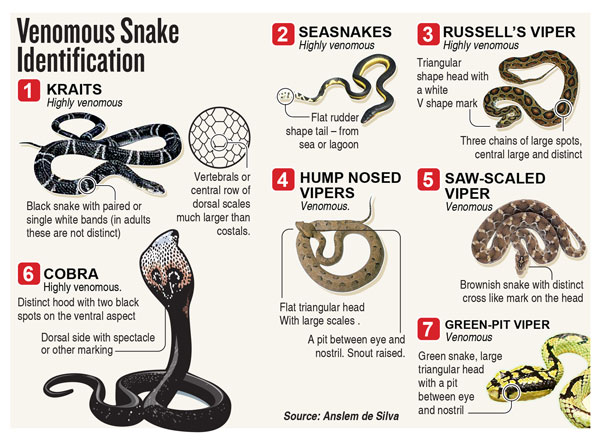News
Antivenom unavailable for common viper strikes

Dr Anslem de Silva
Bites from either highly venomous or mildly venomous snakes have become common in the suburbs but antivenom is not available in the country’s hospitals to treat strikes from some species such as the hump-nosed pit viper.
Those bitten by this species could suffer kidney injury, or even death.
Antivenom, also called antivenin, is largely imported from India. Scientists have noted that such antivenom is not ideal against pit viper bites.
Antivenoms are “the only therapeutic products that could treat snakebite envenoming,’’ according to the World Health Organisation.
Recently, a father of two who survived a hump-nosed pit viper bite, shared his experience at home and at hospital.
Jeewan Hettigamage, who works in a software company, suffered a snake bite at about 9:40 p.m. last Monday at his residence/ workplace at Kelenimulla, Mulleriyawa, while he chatted on the mobile phone before taking a shower.
“I was resting my legs on the sink, while I was taking a call on the mobile phone. I put my legs down after finishing the call and I felt a sting in my leg. I turned on the flashlight and saw a snake coiled and ready to strike,’’ he recalled.
He took a photograph of the serpent and washed the bite wound and called a work colleague who was staying with him to help.
He was taken to the nearby Mulleriyawa Hospital, which now treats coronavirus patients. So, he was directed to Colombo National Hospital.
Mr Hettigamage said that at the emergency unit, he learnt that he had been bitten by a hump-nosed pit viper (hypnale hypnale). He was also told that there was no antivenom for this species of snake.
“I was only given antibiotics intravenously as doctors feared that kidneys would be affected.’’
He underwent many blood and urine tests in hospital, before he was discharged.

The hump-nosed pit viper that attacked Jeewan Hettigamage
Physicians suggest people take a photo, if possible, to identify the snake and wash the bite wound.
Consultant Physician at the National Hospital Dr Harsha Sathischandra, told the Sunday Times that there is no antivenom for hump nosed pit viper bites.
He said doctors will first try to determine whether the venom is in the blood and “had reached other organs through the circulatory system, or whether the venom is in the bite area.”
If the blood pressure drops, if neurological complications are noted, and if there is internal bleeding and indications are that the venom has spread, antivenom used for bites of cobra, krait, or Russel’s viper, could be given.
He said that even though the bite of a hump-nosed pit viper causes less damage than that from a cobra, Rusell’s viper, or a krait, the venom could kill. The venom causes complications in kidneys. Those with kidney disease, diabetics, and those suffering from heart disease are at high risk.
Veteran herpetologist as well as South Asia and Iran, Crocodile Specialist Group, IUCN/SSC, chairman, Dr Anslem de Silva, citing a scientific paper he published in 2004 said that six venomous snake species are responsible for the high incidence of snake bite morbidity and mortality in Sri Lanka.
Dr de Silva explained that the nocturnal and secretive nature of many venomous snakes, such as Russell’s viper, both krait species, Indian cobra, hump-nosed pit viper, helps them adapt to life in agricultural fields, farmlands and in human dwellings in rural and urban areas, even in city environments, as they feed on rats, frogs, geckos, and other snakes that take refuge in homes and attics.
He added that most venomous snakes have cryptic colouration, and thus blend with or simulate some inanimate object of the environment, thus increasing the chances of people treading on them. This can be observed in the hump-nosed viper species as the brown, grey and black cryptic colouration camouflages them among dry fallen leaves and other vegetation.
He also added that the hump-nosed pit viper is commonly seen across the country.
“When a person encounters a snake they should call a person who can handle snakes. In India there are people who catch snakes that are found within houses and release them into the wild. I suggest similar action to be taken in Sri Lanka,’’ he said.
He added that many alarmed people kill or injure snakes, but snakes, too, are important as they contribute to maintaining a healthy ecosystem.
He said that to avoid snake bites, health planners should look into factors in housing, carry out educational programmes on avoiding snake bites as well as use of protective footwear when living in areas where snakes are common.
He added that there is a project to produce a polyvalent antivenom serum for cobra, kraits, Russell’s viper, saw scaled viper and hump-nosed viper, which is almost 100% effective. Further, there is a plan to prepare another antivenom for highly venomous sea snakes to protect the fishing community.
The Department of Wildlife Conservation Director General, Chandana Sooriyabandara said staff can only remove snakes from public places as they only have 1,100 workers island-wide.
He said that people should not depend on wildlife workers to remove snakes from homes.
Mr Sooriyabandara said people should try to identify snakes by taking photos with mobile phones and make an effort to remove snakes by themselves from their homes.
But many have questioned this impractical advice considering the dangers of trying to remove a snake from a home.
Mr Sooriyabandra said also that wildlife staff would help experts to research solutions for venomous snake bites, if any groups request permission, legally.

| Home remedies could worsen bite outcome People who suffer snake bites are being advised to stay clam so that they will not help speed up the spread of the venom in their blood throughout their body. National Coordinator (Training) Accident and Orthopaedic Service at the National Hospital, Pushpa R. Zoysa said raising the level of physical activity could increase the circulation of blood and spread venom to other organs. Remain calm and call for help, she advised. Use soap and wash the bite wound with running water and seek immediate medical help. Paracetamol can be given to help ease the pain. Patients should not try home remedies, such as rubbing alcohol to the bite wound, and taking asprin. She said that no one should try to suck venom from a bite site, nor should anyone make incisions near the wound. Such interventions create more complications.
| |

